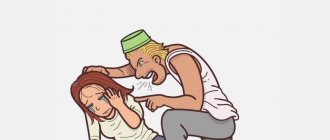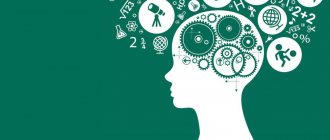Introduction
In contrast to the concept of “personality,” the concept of “character” covers both socially significant and socially neutral aspects of his behavior. Socially significant behavioral characteristics of an individual are formed by the mechanism of generalization of those modes of behavior that give the best adaptive effect in a given social environment. Human behavior is not determined by innate instincts. But his actions must be carried out with a strong focus and operational certainty. The system of character traits of an individual, as it were, replaces his system of animal instincts, ensuring integrity and consistency, adaptability of behavior. Character is a measure of the balance of the internal and external world, the features of an individual’s adaptation to the reality around him. Character determines the type of interaction of a given individual with the outside world.
In the development of character and its various aspects, a significant role is played by the critical demands of the environment, the decisive circumstances that arise in a person’s life path, especially in childhood and adolescence. However, since character is associated with the worldview of the individual, its intensive, purposeful formation is carried out in adulthood. Z. Freud and E. Fromm made a significant contribution to the disclosure of the essence and typology of character.
Classification of people by temperament
Few people know that the founder of the definition of personality types is the famous ancient Greek physician and philosopher Hippocrates. Being a leading doctor of his time, he conducted many interesting experiments.
Since Hippocrates was a supporter of materialism, he tried to find a connection between temperament and the amount of one of 4 fluids in the body: lymph, blood, yellow and black bile.
As a result, he introduced 4 main types of temperament:
- choleric;
- phlegmatic person;
- melancholic;
- sanguine
According to Hippocrates, yellow bile predominated in the body of choleric people, black bile - of melancholic people, lymph - of phlegmatic people, and blood - of sanguine people.
For obvious reasons, modern medicine cannot take seriously these conclusions of the famous ancient Greek doctor, who did not leave behind any explanation as to how he managed to identify such patterns.
An interesting fact is that Hippocrates compared a person’s character with his physical health. He believed that in our body thoughts, the state of organs and emotions are inextricably linked.
In modern medicine and psychology there is such a direction as psychosomatics. Psychosomatics (“psyche” - soul and “soma” - body) studies the influence of psychological factors on the occurrence and course of somatic (bodily) diseases. By approaching this issue correctly, many people have managed to get rid of various ailments associated with psychosomatics.
Concept of character.
The place of character in the general structure of personality
Translated from Greek, the word “character” means “seal”, “imprint”, and in its semantic meaning - a clearly expressed certainty, typical behavior of each person.
Character is a system of stable motives and modes of behavior that form a behavioral type of personality.
Formed in social conditions and influenced by the demands of the social environment, character in its dynamic manifestations is associated with the genetic characteristics of the individual and the type of his higher nervous activity. However, from the genetic arsenal the individual draws those capabilities that are necessary to solve the system of life problems.
The core basis of character is the value orientation of the individual, the internalization (appropriation) of socially adapted modes of behavior by the individual.
Character is destiny. Character is not only stable behavioral characteristics, but an individual’s satisfaction with his line of behavior, personal sanctioning of his behavior. Hence the irresistible desire of people to “show” their character.
The problem of character is the problem of holistic coverage of the mental characteristics of an individual.
The physiological sphere of an individual’s behavior is covered by the concept of “temperament,” while the socially determined sphere of his behavior is covered by the concept of “character.” Temperament is correlated with the natural-unconscious sphere, with the sphere of emotions, character - with the volitional sphere. However, these are interconnected spheres of the human psyche. The natural peculiarity of an individual leaves an imprint on his character, i.e. and on socially formed ways of his behavior.
When analyzing a person’s character, it is necessary to distinguish between endogenous (internally determined) and exogenous (externally determined) characteristics. But these groups of characterological features are interconnected. Social inheritance correlates with biological inheritance.
The socially typical originality of a person, the peculiarities of his socialization and upbringing are fixed in character.
Some character traits act as leading ones, determining the characterological appearance of a person. Others may be secondary.
Many character traits are formed in a person very early. The sensitive (most sensitive) period for the formation of basic character qualities is the age from 2 to 10 years. This period in a person’s life is associated with an intensive process of socialization based on imitation of socially approved standards of behavior. A positive example is the most important means of character formation here. This age period is also characterized by high behavioral activity. Children strive to actively develop their behavioral capabilities. In this regard, the management method acquires significant educational significance.
Environmental conditions, approval and censure of various forms of behavior by the microenvironment form the main channel of character formation. But character is also an individual’s ability to defend his lifestyle and his position in life. The nature of each individual enters into its own “connections” with reality. In this interaction of internal and external, various contradictions and intrapersonal conflicts are possible. Only by taking into account the specifics of the interaction between the internal and external of a given individual can it be possible to organize effective environmental conditions aimed at mobilizing the positive qualities of the individual and suppressing his negative qualities.
Sometimes seemingly insignificant interference in an individual’s life leads to dramatic changes in his behavior - here the impact turned out to be aimed at articulating the “base plates” of his soul. “There can be no direct intervention in the formation of character... The direct influence of an educator on the formation of character would be as absurd and ridiculous as if a gardener decided to promote the growth of a tree by mechanically dragging it up from the ground. But the gardener influences the germination of the plant not directly, by pulling it out of the ground by the top, but indirectly, through appropriate changes in the environment.”
People are such as are the sustainable demands of the environment.
When correcting negative character traits, the educator encounters resistance not only from nature, but also from the hardened layer of behavioral reactions acquired by the individual in previous experience, from the sphere of his subconscious. Breaking existing stereotypes is hard neuropsychic work. In this case, emotional breakdowns and conflicts are possible. Only deep life crises, intimate processes of repentance and internal self-building lead to fundamental changes in a person’s character.
There is no average standard for individual behavior. The behavior of each person in one or another of its manifestations deviates significantly from the average norm. People strive for self-realization in the most suitable areas of communication and activity for their character.
Character cannot be considered only as a system of performing methods of behavior fixed in the individual’s experience. Character integrates all the mental characteristics of an individual. What forms of behavior are selected by the individual? This depends not only on the environment, but also on his emotional and intellectual organization. Those behavioral manifestations that fall into the sphere of individual self-condemnation are inhibited and fade away. Techniques that promote the individual’s self-expression are “affirmed.”
Character formation is associated with an individual's ability to learn. Character reveals the patterns of functioning of skills and habits. At the same time, the mechanism of transferring skills and strengthening them as a result of systematic functioning acquires significant importance.
In the behavioral experience of an individual, both adaptive and maladaptive forms of behavior (for example, acquired helplessness) can accumulate. And under the cultural layers in the human psyche, an undying volcano of ancient natural formations is always “breathing”. And the more difficult the behavioral situation is for a given individual, the higher the likelihood of this volcano erupting. Often the mental state of an individual so modifies the manifestations of his character that sometimes the person does not recognize himself.
A person is able to regulate his character, arbitrarily bringing himself into mental states that are adequate to the current behavioral situation.
What is personality
A personality is a person who enters into relationships with the environment and manifests himself in the process of activity. It is also a set of properties, qualities, mental abilities, physical and emotional characteristics. They make a person individual and are revealed in the process of interaction with society.
Personality is manifested through habits and preferences, the use of accumulated knowledge. Different situations lead to changes in behavior; a person determines tactics based on experience, relying on emotions. Depending on this, there are different types of people. For example, they are divided by their ability to perceive information. Visual learners trust their eyes more, auditory learners trust hearing, and kinesthetic learners trust tactile sensations.
Typology of characters
Character typology refers to the classification of character types that are most often found in people. In turn, a character type presupposes a certain, fairly stable combination of certain character traits - one that occurs in life more often than other possible combinations.
There are quite a few character traits, at least about 150, and they can combine with each other in a person's personality in various ways. In this regard, the question naturally arises: are there character types? It is assumed that there are typical combinations of character traits.
This can be answered in the affirmative, and for the following reasons. First of all, certain, preferential combinations of character traits actually exist. Usually, for example, mutually complementary character traits of a person are combined with each other, for example, openness, decency, integrity and honesty. We can talk about combinations of character traits that do not contradict each other. For example, character traits such as dishonesty and honesty may be in clear contradiction with each other, and their combination is unlikely to form a certain type of human character. In a person’s character, such traits are usually preserved, reinforcing and supporting each other, which make him a holistic, harmonious person, and his actions consistent.
It is known that contradictions can exist in the characters of people. They appear due to the fact that some human character traits are not entirely compatible with others. This leads to the fact that similar contradictions and unpredictability begin to appear in human behavior.
Such contradictions cause displeasure on the part of people around them, who are unable to adapt to such a person. In addition, this person often suffers himself and tries to get rid of the contradictions that exist in his character. These trends, along with those outlined above, also contribute to the formation of human character types.
It should be noted that there are not only many different character traits, but also a considerable number of different types. In addition, within the framework of various theories of personality, for example, in line with the theory of traits (we defined human character above, based on this theory), the theory of social roles, psychoanalytic theory and humanistic theory, human character is understood differently. For example, in the theory of social roles, this will be a typical combination of life roles for a particular person, which give rise to actions designed to have a certain influence on people. In psychoanalytic theory, a person’s character is determined through the relationship between the Id, Ego and Superego, as well as through the person’s preferred defense mechanisms of the Ego. In the humanistic theory of personality there is no precise definition of character, but it can be assumed that it is associated with one or another hierarchy of human needs. From the above it follows that typologies of people’s characters based on various theories of personality are also possible.
One way to construct a typology of characters is to observe a sufficiently large number of people, carefully study their characters and then, dealing with the characters themselves, try to divide them into groups. In this case, characters that are similar to each other and, at the same time, different from the characters included in another group can be combined into one group.
A classification or typology of characters constructed in this way actually reflects the typical characters found in the group of people being observed. It may or may not correspond to the typical characters found in all people without exception. Much here depends on the extent to which the group of people being observed represents all people, that is, is representative of them. In a similar way, for example, character typologies are constructed, based on examination of a certain population of people using psychological tests, followed by statistical processing and generalization of the results obtained.
The second way to create a character typology is to divide people into groups based on some well-classified characteristics, and then study the character traits of the people included in these groups. These features in a generalized form can represent a typology of characters.
For example, assuming that a person's character is related to his temperament, one can first divide people into groups according to their temperament, and then the typical combinations of character traits in people with different temperaments can be considered as character types. This is how, for example, a typology of characters was created according to E. Kretschmer, in which types of body structure served as the basis for the initial division of people into groups.
The third way to construct a typology is to create it in a purely theoretical, speculative way, based on relevant scientific ideas about personality. For example, one can proceed from the definition according to which a person’s character is a certain combination of personal properties, among which typical combinations of properties can be identified, building on their basis an appropriate typology of characters. The weakness of this approach and the corresponding typology may lie in the fact that it is constructed speculatively and may not correspond to real life. This is exactly how, for example, the typology of characters was created in line with the psychoanalytic theory of personality, and it has precisely these shortcomings.
As we can see, different ways of creating character typologies lead to different results. Under these conditions, it is difficult to determine which of the proposed typologies is more correct and accurate and which is not. Indeed, the current picture in this area of knowledge is such that in psychology there coexist typologies of people’s characters that are different in essence and in the way they are created, and it is difficult to determine exactly which of them are closer or further from the truth. Let's get acquainted with the typologies that are most widespread and recognized.
The German psychiatrist E. Kretschmer is known as the creator of a typology of constitutions (the structure of the human body), in which three main types of constitution were identified: asthenic, picnic and athletic. The first type of constitution is characterized by poor development of all the main components of the body - skeleton, muscles, fat; people of this type are usually short, thin and physically weak. The second type of constitution is characterized by average height, a moderately developed skeleton, well-developed fatty tissue and internal cavities of the body, as well as poorly developed muscles. Such a person is said to be plump and fairly well-fed, but physically weak. The third type is characterized by medium or tall height, well-developed muscles, great physical strength and a harmonious physique.
E. Kretschmer as a doctor was primarily interested in the innate tendency of people with different types of constitution to various kinds of nervous and mental illnesses, but, dealing with many patients in the clinic, observing them, he noticed that there were certain differences in the characters of people with different types of body structure. As a result, E. Kretschmer’s book, “The Structure of the Body and Human Character,” appeared, which became quite famous, attracting increased attention for several decades in the first half of the 20th century.
In this and his other works, Kretschmer expresses and substantiates the hypothesis that asthenics, picnics and athletes are characterized by typical and different character traits. This is how the first typology of human characters appeared in modern psychology.
Kretschmer attributed the following character traits to asthenics: an analytical mind, a penchant for in-depth introspection, a love of philosophy, the exact sciences, and religion, a limited, selective circle of friends, a tendency toward a solitary lifestyle, relative indifference to other people, weakly expressed emotionality.
Picnics, according to Kretschmer, on the contrary, represent quite emotional people, sociable, with a penchant for various kinds of arts: painting, music, theater, literature. They love to have fun, have fun, enjoy life, and are often the soul of various kinds of companies.
Athletics are people with a fairly strong will, persistent, purposeful, stubborn. According to Kretschmer, they do not differ in any other abilities.
The author of this typology of human characters was convinced that a person’s character is innate (at that time, temperament and human character were not yet clearly distinguished), and his belief corresponded to the general scientific trend of the beginning of the 20th century. – to search and be sure to find the biological foundations of the human psyche.
However, accurate statistical data and calculations concerning the connection between body structure and human character, obtained shortly after the appearance of Kretschmer’s teachings, turned out to be disappointing. It turned out, firstly, that a fairly large number of people cannot be definitely attributed to one or another type of body structure identified by Kretschmer, and secondly, that most people have so-called mixed types of constitution, that is, body structure features belonging to different constitutional types . Thirdly, it turned out that even those people who have clearly expressed traits of a very specific constitutional type often do not have at all the character traits that Kretschmer attributed to them. As a result, under the influence of quite serious and thorough criticism, Kretschmer’s concept was by the middle of the 20th century. recognized as unscientific, and interest in it gradually dried up, at least in scientific circles.
However, after about 30 years, in the second half of the 20th century. In connection with the development of psychogenetics, scientific interest in the ideas of the German psychiatrist was revived again. It turned out that, in general, Kretschmer was still right: there can indeed be a certain relationship between the structure of the body and the character of a person, which, however, is not direct, cause-and-effect, but indirect, statistical.
It turned out that there is a genetic predisposition to certain types of mental illnesses and that people suffering from corresponding illnesses, such as schizophrenia and manic-depressive psychosis, exhibit typical changes in character that are very reminiscent of the character types described by Kretschmer.
Since a person's body type is in fact innate, and people with a certain type of body structure are more likely than others to suffer from certain nervous and mental diseases, it can be assumed that a common genetic factor influences both the type of body structure and a person's tendency to certain diseases and makes it very likely that the corresponding person will develop certain accentuated character traits.
Capabilities
Important personality traits are considered to be abilities that determine the individual style of activity and are the basis for its success. There are also qualities that provide the ability to interact with other people and are necessary to gain respect and authority from others.
Abilities and inclinations
Abilities are a complex system of human qualities and properties. Their biological basis is inclinations, that is, innate physical and mental characteristics, including temperamental properties. But not only. Often, inclinations are associated with the psychophysiological characteristics of the body; they are given to a person from birth and are necessary for success in a particular activity. But they don't guarantee it.
For example, an ear for music is required by a musician, and a high sensitivity of the visual analyzer is required by an artist. But this alone is not enough to master an activity, much less to achieve success. To do this, you need to develop abilities, and this is only possible through activity and requires the investment of labor and willpower. Mastery is not a gift given by nature or God, but, above all, work and perseverance.
Is it possible to develop abilities in the absence of natural inclinations? This is a very difficult question; there is no clear answer to it. Undoubtedly, in the absence of the necessary qualities, it will be more difficult to master the activity, it will require more effort and, perhaps, the achievements will not be so impressive. But recently, more and more psychologists support the idea that a persistent and persistent person can learn anything. The main thing is to give him the right training techniques. That is, to teach any person to draw, you just need to know how to teach correctly.
Types of abilities
The whole variety of human abilities is usually divided into two types: general and special.
Special qualities include those qualities that are required to master a specific activity, such as, for example, an ear for music for playing musical instruments or a phonetic ear for learning foreign languages. Playing sports requires endurance and mobility, and working with children requires a sense of empathy.
General abilities are no less diverse, because they are needed in a wide variety of areas of activity. First of all, these include mental abilities or level of intelligence. Although intelligence is considered an innate characteristic of a person, mental abilities require their development, including the quality of memory, attention, thinking, as well as the volitional sphere and reflection.
Sometimes a high level of mental ability combined with learning ability is called giftedness. This quality of a person can compensate for his lack of some special abilities and allow him to achieve success in many types of activities.
No matter how valuable abilities are, they are only potential, an opportunity for further development and improvement of a person. The same can be said about other individual psychological characteristics. Each individual has the opportunity to become a unique, extraordinary, talented person, but for this you need to know your psychological characteristics, your strengths and weaknesses and actively engage in self-development.
Using knowledge about character in the practice of professional communication among police officers
Employees of internal authorities in the practice of professional communication can use character typologies created by K. Leonhard and A. Lichko.
German psychiatrist K. Leongard and Russian psychiatrist A. Lichko in the middle of the 20th century. offered their typologies of people's characters. Leonhard extended the typology he created to adults, and Lichko addressed it to teenagers and young men. Both doctors based their typology on the idea of typical cases of manifestation of accentuated character traits in people, and the descriptions and terminological definitions of the corresponding character types by both authors are quite close.
K. Leonhard identified 12 types of accentuated characters, which are often found in people suffering from various neuroses. These are the following types:
1. Hyperthymic type. It is characterized by increased sociability, emotionality, violations of the logic of thinking (frequent deviations during the conversation from the initial topic of communication), frequent conflicts with
surrounding people due to a frivolous attitude towards their responsibilities. The most common negative character traits of this type of people are the following: frivolity, a tendency to immoral acts, increased irritability, projectism. At the same time, people of this type are characterized by the following positive character traits: energy, initiative, optimism.
2. Dysthymic type. He is characterized by unsociability, taciturnity, a prevailing bad mood, avoids noisy companies, prefers to be alone, to be at home, to lead a secluded lifestyle, rarely
comes into conflict with people around him. Along with this, he highly values friendship, is serious, fair and conscientious.
3. Cycloid type. Characterized by frequent, periodic changes in mood and manner of communicating with people. During periods of good mood, people of this type are sociable and kind, and during periods of bad mood they are withdrawn and angry.
4. Excitable type. He gets excited quickly, often loses his temper, is prone to rudeness, and in conflicts with people he is an active, provoking party. He is often irritable, gloomy, and unsociable. In a normal state, he has a number of positive character traits: conscientiousness, accuracy, loves animals and small children.
5. Stuck type. He is characterized by a penchant for moralizing, inflexibility of thinking and stubbornness. In conflicts he is often an active party, an initiator. Touchy, suspicious and vindictive.
Sometimes he is overly arrogant and makes exorbitant demands on people. May have the following positive traits: fairness, desire for good results at work.
6. Pedantic type. He behaves like a bureaucrat, making many purely formal demands on people. Sometimes he harasses his family with excessive claims to neatness. His attractive character traits: conscientiousness, accuracy, reliability and responsibility in business.
7. Anxious type. Unconfident, timid and uncommunicative, with a predominance of bad mood. Rarely conflicts with people around him, acting in conflicts mainly in a passive role. Often has the following positive character traits: friendliness, self-criticism, conscientiousness, diligence. Such people, due to their insecurity, are often targets for jokes, “scapegoats.”
8. Emotive type. Overly emotional, tearful. Has a fairly narrow, limited circle of contacts. However, such a person understands the people with whom he communicates closely. Rarely enters into conflicts with others, and carries grievances within himself. Positive character traits: kindness, compassion for people, sense of duty, diligence.
9. Demonstrative type. Self-confident, has inflated claims, provokes conflicts, but at the same time he defends himself more actively if he is attacked. Characterized by ease in establishing contacts, a desire for Leadership, a thirst for power and praise. He is often selfish, hypocritical, boastful, and shirks from work. He also has the following positive character traits: courtesy, the ability to captivate other people, artistry, originality of actions and thinking.
10. Exalted type. He is distinguished by high contact and sociability, talkativeness and amorousness. Attached and attentive to friends and loved ones. Often gets into arguments with people, but does not lead to conflict. Subject to momentary moods and panic. Other positive characteristics: has good taste, shows compassion for people, has sincere feelings.
11. Extroverted type. He is highly contactable and has a lot of acquaintances and friends. He is talkative and shows interest in everything. Rarely enters into conflicts with other people while playing them
usually a passive role. He does not claim leadership, conceding it to other people, prefers to obey others and be in the shadows. Unpleasant character traits: frivolity, thoughtlessness of actions, susceptibility to the influence of other people, passion for entertainment, participation in the spread of rumors and gossip. Has such positive character traits as attention to people, willingness to listen, help, and diligence.
12. Introverted type. Characterized by isolation, low contact, and a tendency to philosophize, divorced from reality. He loves loneliness, rarely comes into conflict with people around him, and only when someone tries to unceremoniously interfere in his life. Negative character traits: stubbornness, inflexibility of thinking, persistent defense of one’s own, not always correct, ideas. He also has such attractive character traits as restraint, strong convictions, and integrity.
In A. Lichko’s typology of characters, eleven types of accentuated characters of adolescents are presented:
1. Hyperthymic type. Characterized by sociability, mobility, and a penchant for mischief. He brings a lot of noise into the events happening around him and loves noisy companies of his peers. He is restless, not disciplined enough, studies unevenly, despite his generally good abilities. The mood is always high. With adults, with parents and teachers, it often provokes conflicts. With a wide variety of hobbies, such teenagers can be superficial and changeable. They often overestimate their capabilities, are self-confident, love to boast, and try to make a good impression on others.
2. Cycloid type. It is characterized by increased, periodically occurring irritability, a tendency to apathy, which also appears from time to time. Teenagers of this type prefer to stay at home instead of being in noisy companies among peers, on the street or outside the home. They react extremely irritably to comments addressed to them, and have a hard time experiencing the troubles that happen to them.
3. Labile type. He is extremely changeable and unpredictable in his mood, and the reasons for a change of mood may be the most insignificant. At the same time, teenagers of this type well understand and feel the attitude of the people around them.
4. Asthenoneurotic type. Characterized by increased moodiness and suspiciousness, fatigue and irritability, especially when performing complex mental work.
5. Sensitive type. This type of people is characterized by increased sensitivity to people and human relationships. They do not like large, noisy companies or gambling, they are usually timid and shy and often give the impression of being withdrawn. In reality, such teenagers are quite open and sociable, but only in a narrow circle of close, well-known people. They often prefer communication with adults and children to communicating with their peers. They are distinguished by obedience and affection for their parents. Quite early on, they exhibit a strong sense of duty, high moral demands on themselves and the people around them, and increased effort and diligence.
6. Psychasthenic type. Adolescents of this type are distinguished by early and accelerated psychological development, often surpassing their peers in development. They are prone to reflection and introspection. Their self-confidence is often combined with indecisiveness, and their categorical judgments are often combined with their lack of thought and a tendency to take premature actions.
7. Schizoid type. He is characterized by increased isolation, prefers to be alone or in the company of adults. He often shows indifference to the people around him, does not understand their condition well, and does not know how to empathize or sympathize. Often immersed in fantasies and dreams, divorced from reality.
8. Epileptoid type. Such teenagers often cry and harass the people around them. They love to torture animals, tease younger children, and mock the helpless. In companies of peers they lead
themselves as dictators. Typical traits: cruelty, power, selfishness. They try to please elders, stronger than them, and influential people.
9. Hysterical type. Has a tendency to become hysterical. He is distinguished by his egoism and desire to attract special attention to himself. Posing and theatrical behavior are often observed. It's hard to bear
when someone is praised in his presence, when someone is given more attention than him. Characterized by excessive claims to an exclusive position among peers.
10. Unstable type. This is a weak-willed person who shows a tendency to obey developing circumstances. Strives for entertainment, indiscriminately, as well as idleness and idleness.
There are no serious interests or hobbies; he practically does not think about his future, including his professional one.
11. Conformal type. Demonstrates a constant tendency and willingness to change his views and behavior for reasons of personal gain” to please those people on whom he depends. This is an opportunist, ready to betray other people for the sake of his own interests, to leave them in difficult times, and almost always such a person finds justification for his immoral actions.
It is interesting to compare these two character typologies in order to establish what they have in common and what is different. The general thing seems to indicate that character accentuations in children and adults are typical and quite stable. The differences in these two typologies make it possible to determine how the character accentuations of adolescents differ from the character accentuations of adults.
Based on such a comparison, law enforcement officers can draw a conclusion about which character accentuations are characteristic of adolescents and not characteristic of adults.
What these two typologies have in common, both in name and in content, are the following accentuated character types: hyperthymic, cycloid, schizoid (according to Lichko) and introverted (according to Leonhard), hysterical (according to Lichko) and demonstrative (according to Leonhard), asthenoneuro -tic type (according to Lichko) and dietetic type (according to Leonhard), epileptoid type (according to Lichko) and excitable type (according to Leonhard).
Note that these coincidences are generally consistent with the types of characters that E. Kretschmer identified. Consequently, it can be considered proven that those changes in character that occur in the most well-known types of mental illnesses: hysteria, schizophrenia and manic-depressive psychosis, as well as typical character accentuations that occur in both adolescents and adults, have a common and, apparently, a genetic basis.
At the same time, there are differences in the accentuations of characters characteristic of adults and adolescents. In adolescents, for example, there are character accentuations such as lability, sensitivity, psychasthenicity and instability, which, apparently, are not characteristic of adults. For their part, adults exhibit character accentuations such as pedantry, anxiety, and stuckness, which teenagers do not have. From this we can conclude that with age, a person’s character type generally remains stable, but in some respects it can change.
Kretschmer's theory
This German scientist divided the personality and character of a person into three main groups in psychology. To each of them he classified people with different physiological characteristics:
- Asthenics. Such people have a thin physique, thin legs and arms, and rather weak muscles. In Kretschmerian psychology, such an individual corresponds to the personality and character of a person of the schizothymic type. These are people who are characterized by stubbornness and poor adaptation to a changing environment, as well as isolation.
- Athletics. These people have a fairly strong muscular body and an ixothymic type of character. Such an individual stands out for his calmness, practicality, authority, and restraint.
- Picnics. The figures of such people are quite dense and in most cases are overweight. Picnicians can be distinguished by their large head, short neck and small facial features. Their character is characterized by sociability, quick adaptation to changing conditions and emotionality.
Bibliography
1. Vygotsky L.S. Pedagogical psychology. – L., 1983.
2. Enikeev M.I. General and legal psychology (in two parts). Part I “General psychology”. Textbook. – M.: Legal. lit., 1996.
3. Kovalev A.G., Myasishchev V.N. Psychological characteristics of a person. T. 1. Character. – L., Leningrad State University Publishing House, 1958.
4. Brief psychological dictionary / Ed. A.V. Petrovsky and M.G. Yaroshevsky. – M., 1985.
5. Krutetsky V.A. Psychology. – M.: Education, 1986.
6. Levitov N.D. Psychology of character. 3rd ed. – M., Education, 1964.
7. Leongard K. Accentuated personalities. – Kyiv, 1981.
8. Leontyev A.N. Problems of mental development. – M., 1965.
9. Lichko A.E. Psychopathy and character accentuations in adolescents. – L., 1983.
10. Nemov R.S. Psychology. – M.: Education, 1990.
11. Nemov R.S. General psychology: Textbook. for students education institutions prof. education. – M., 2003.
12. General psychology: Textbook for students of pedagogy. Institute / A.V. Petrovsky, A.V. Brushlinsky, V.P. Zinchenko and others; Ed. A.V. Petrovsky. – M.: Education, 1986.
Attention!
If you need help writing a paper, we recommend turning to professionals. More than 70,000 authors are ready to help you right now. Free adjustments and improvements. Find out the cost of your work
Free estimate
+1
Size: 24.82K
Downloads: 114
11/18/14 at 05:17 pm Author: Portugal
Liked? Click on the button below. It's not difficult for you
, and we
are pleased
).
To download Abstracts for free at maximum speed, register or log in to the site.
Important! All presented Abstracts for free downloading are intended for drawing up a plan or basis for your own scientific works.
Friends! You have a unique opportunity to help students just like you! If our site helped you find the job you need, then you certainly understand how the job you add can make the work of others easier.
Add a job
If, in your opinion, the Abstract is of poor quality, or you have already seen this work, please let us know.
Personality types in psychology
In psychology, there is a classification of people according to personality types:
- Explosive. A person reacts violently to events or words and is characterized by increased excitability. He is sullen, usually cruel and overly impulsive;
- The hysterical type wants to be recognized and noticed. For him, the main thing is the presentation of himself and his own emotions. He is extravagant, his behavior is theatrical. Such a person is fickle and cannot be called sincere. He overacts, trying to increase his importance;
- The asthenic type is fearful, too vulnerable people. They have little stamina and get tired quickly. A person is always preoccupied with something, tends to invent illnesses and create problems. The sad mood hides behind a mask of indifference, sometimes it seems too cheeky;
- The psychasthenic type is overly anxious and indecisive. He always doubts his actions and regrets what he has done. Such people double-check everything, are prone to pedantry, and follow instructions exactly;
- The schizoid type avoids contacts, finds it difficult to establish communication, and is unable to empathize. A person finds himself in creativity, escaping from reality. He is cold, angular, awkward, afraid of new things.
Mixed classifications
Modern system classifications are associated with the names of K. Jung, G. Eysenck, L. N. Sobchik, L. Ya. Dorfman and others. The authors of modern system concepts try to summarize as much as possible the results of empirical studies of individual human characteristics within the framework of a single typological model. Such a model, as a rule, is the center of a structure that combines general, typological and individual psychological characteristics of a person.
Examples
Such system classifications can be: “The Theory of Leading Tendencies” by L. N. Sobchik, “The Concept of the Meta-Individual World” by L. Ya. Dorfman.
Personality types in conflict situations
Conflicts are an integral part of life. It is often impossible to do without them, and avoidance will only aggravate the tension and push the goal away. What are the types of personality, depending on behavior in conflict:
Demonstrative. He strives to be the center of attention, so he creates conflicts to make others remember him. It is better not to leave such people aside, but to give them compliments and praise. This will calm them down, the desire to conflict will decrease; Rigid. Conflicts arise due to a person’s touchiness. He constantly feels like he is underestimated or offended. He tends to take things personally and does not tolerate defeat
It is important for him that his truth be recognized; he himself will never refuse it. It’s better not to provoke such a person; it’s easier to smooth out the unpleasant situation and apologize
A constructive dialogue with him is unlikely to happen; The uncontrollable type relies on emotions. It flares up easily and cools quickly when it releases steam. Then he becomes accommodating and is ready to make concessions. He shouts loudly, explaining his position, and can show aggression; The ultra-precise type constantly worries about his own safety. He is too suspicious and anxious. Demands performance at a high level from those around him. Treats himself with even greater pickiness. He's easy to hit. He experiences resentment in private, avoiding public conflicts; The conflict-free type is the most unpleasant type. He dislikes arguments so much that he avoids them in every possible way. Agrees and follows the lead, a person changes his point of view and tactics of behavior. He depends on the personality forcing him to accept a different opinion. This is an unreliable, unprincipled person for whom it is important to avoid quarrels; The conflict type will resolve any controversial situation, turning it in their favor. He even creates it on purpose, because he is confident in himself and has sufficient arguments to win, no matter how many opponents he has.
Conflict situation
Individual and typical traits
Goodwill
The Wheel of Life Balance - what it is and how to work with it
The same character trait may manifest itself differently in different individuals. For example, one person’s courage is reasonable, another’s is reckless. Goodwill can be both sincere and feigned.
Types of temperament according to Hippocrates
The oldest and at the same time the most famous classification of personality types was developed more than 2,500 thousand years ago by the ancient Greek philosopher and healer Hippocrates. I think everyone knows about this typology, but I’ll start with it. Firstly, out of respect for the discoverer, and secondly, because many modern classifications are based specifically on types of temperament.
So, according to Hippocrates, all people are divided into 4 types depending on the fluid prevailing in their body:
- Sanguines. For this type of people, the leading role is played by blood (“sangva” in ancient Greek). Therefore, they are very energetic, active, persistent in achieving their goals, irreconcilable and often cruel. Sanguine people are excellent warriors and leaders.
- Cholerics. Their body is dominated by bile (in ancient Greek - “holi”), so they are extremely fickle, fussy, talkative and emotional. They are characterized by frequent mood swings, imbalance and the inability to focus on one thing for a long time.
- Melancholic people. Their predominant black bile (“melena holi”) makes them gloomy, sad people, constantly in a depressed mood. People of this type are touchy, but sensitive and capable of sympathy and empathy.
- Phlegmatic people. Thanks to the mucus (“phlegm”) that dominates their body, they are sedentary, uncommunicative, self-absorbed, often in a thoughtful state and incapable of strong emotions.
It has now been proven that temperaments do not exist in their pure form, although Hippocrates’ observations are generally correct. It’s just that each of us has individual qualities of different types of temperament. As a rule, there are more of some of them, but it happens that individual properties of all temperaments are present almost equally. Therefore, in modern psychology, it is the individual qualities of temperaments that are isolated and studied. For example, the level of emotionality, the level and nature of sociability, stability or, on the contrary, variability of the psyche, etc.
This is interesting: Topics in psychology: let's take a closer look










